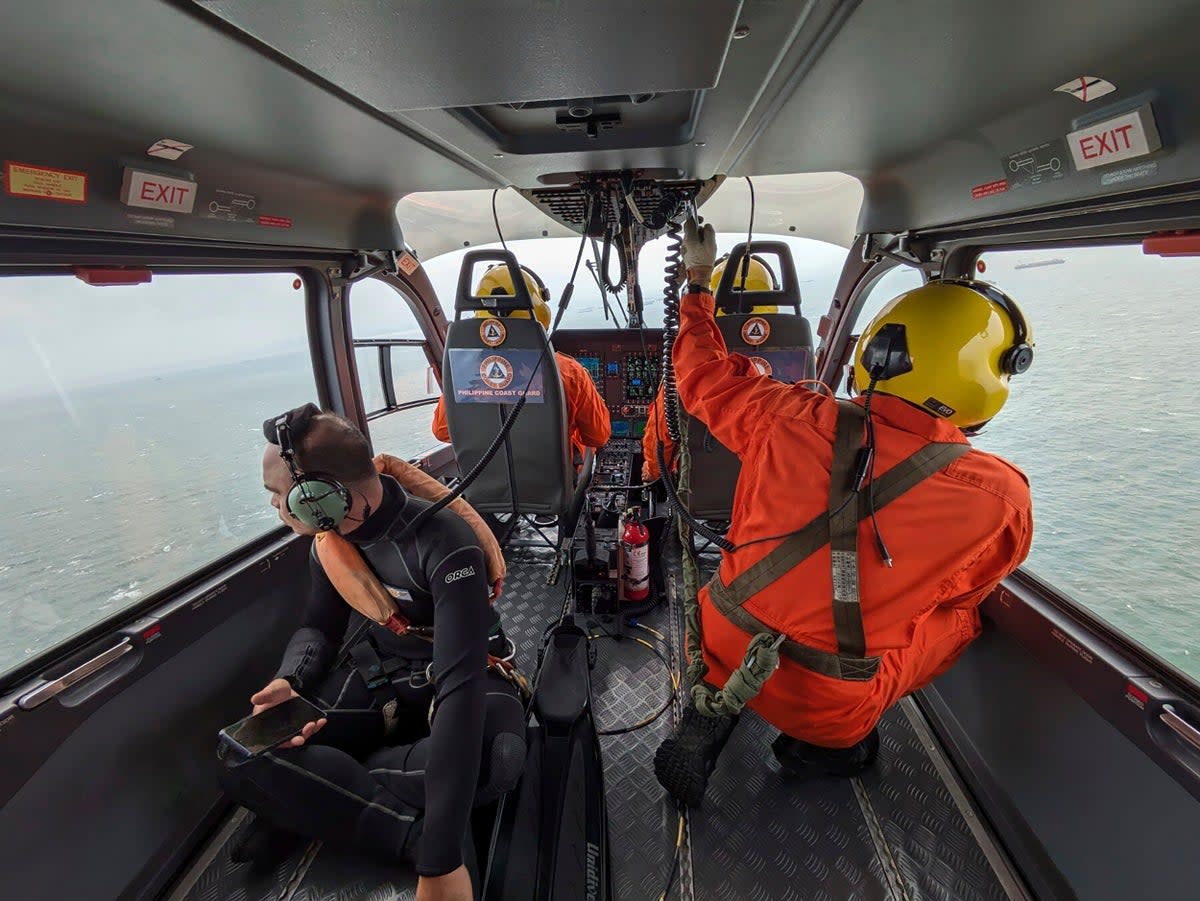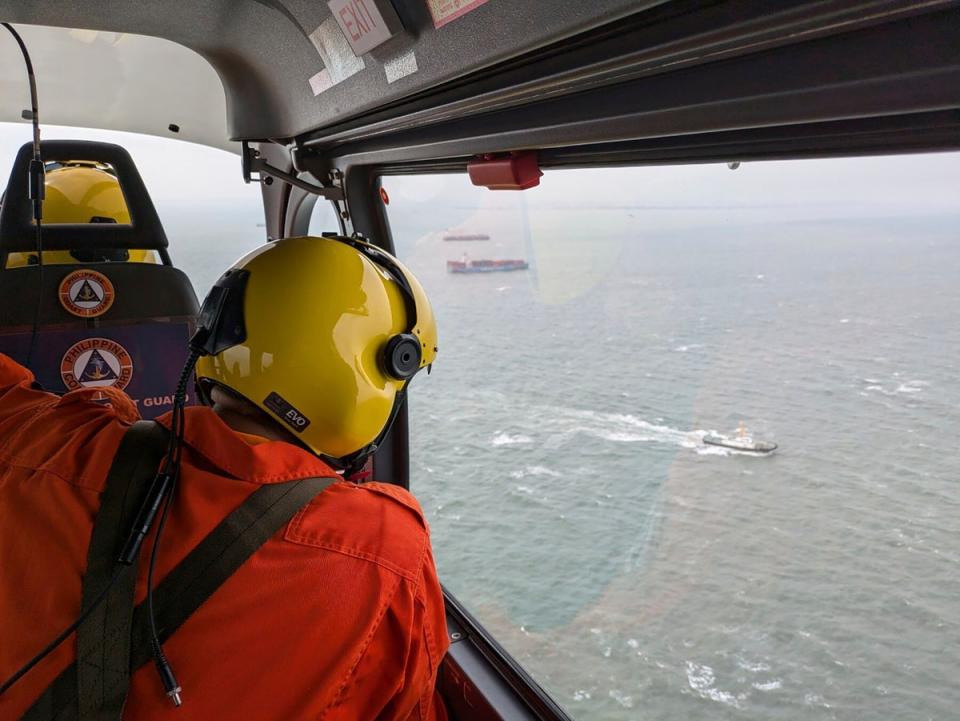Race to pump oil out of sunken tanker and avert ‘worst spill in Philippines history’

The Philippines coast guard is “racing against time” to prevent an environmental catastrophe as it attempts to contain the oil spill from a sunken tanker and stop it from reaching Manila’s shoreline.
The 65-metre-long (213ft) MT Terra Nova, which capsized on Thursday amid rough seas and heavy monsoon rains brought on by Typhoon Gaemi, was carrying around 1.4 million litres (370,000 gallons) of industrial fuel oil in watertight tanks.
It had departed from Bataan province and was heading to Iloilo in the central Philippines when it was hit by large waves and began taking on water. Despite efforts by the crew to steer back to port, the tanker sank shortly after midnight on Thursday.
An oil slick about 3.7km (2.3 miles) long was spotted near the area where the tanker sank, about 6km (3.7 miles) off the coast of Limay in Bataan province. According to the coast guard, there is no sign of a leak from the large amount of industrial fuel oil stored in the tanker. But a long oil spill, which stretches out over several kilometres and is growing rapidly, was spotted in an aerial survey.
The coast guard clarified that this slick had come from the fuel tank that powered the tanker, not from its cargo, which remains secured in watertight tanks.
The spill could reach the country’s capital, Manila, which is just 10km away from where the ship went down. The coast guard said it is making plans to siphon off the toxic oil using floating barriers and suction hoses in order to prevent a major spill that could affect the busy capital.
The oil spill could be the worst in the country’s history if it is not contained. The oil tanker is lying at a relatively shallow depth of 34 metres, based on an initial assessment.
The coast guard is “preparing for the worst”, said Rear Admiral Armand Balilo, its spokesperson. “We are talking about industrial fuel here ... It will definitely affect the marine environment and could even reach us here in Manila,” he said.
The coast guard rescued 16 crew members, but one person drowned, according to Rear Admiral Balilo. “We’re racing against time to siphon off the oil to avoid an environmental catastrophe,” he told reporters, noting that bad weather could complicate their efforts.
Rear Admiral Balilo compared the potential oil spill to the one caused by the sinking of the MT Princess Empress, a Philippine oil tanker, in February last year off Oriental Mindoro province, south of Manila.

Although the Princess Empress was carrying much less fuel oil, it took about three months to contain the spill. The incident caused massive damage to coral reefs and mangroves in a region known for its rich biodiversity, and affected tens of thousands of fishermen and beach resorts.
Manila’s shoreline is a major ecology, tourism and business hub, adorned by upscale resorts, key buildings, and crucial flora and fauna.
Advocacy group Oceana has called on the Philippines government to assess the environmental impact of the oil spill, adding that “all those responsible for failing to prevent this tragedy – from concerned government agencies to private owners of the tanker – should be held accountable”.
The spill is believed to have been caused by the rough seas and adverse weather conditions. There have been days of monsoon rains, exacerbated by a passing offshore typhoon, that set off landslides and flooding across the Philippine archipelago, leaving at least 32 people dead and displacing more than 800,000.

